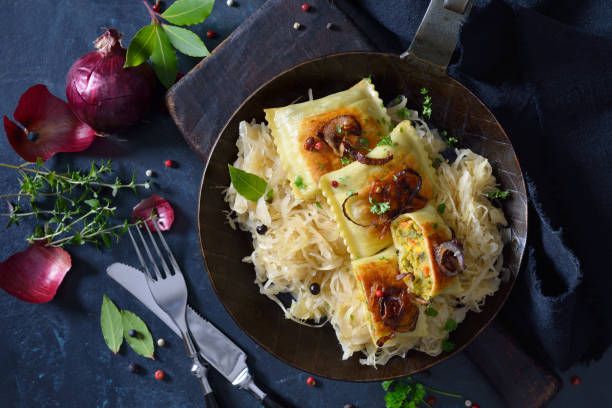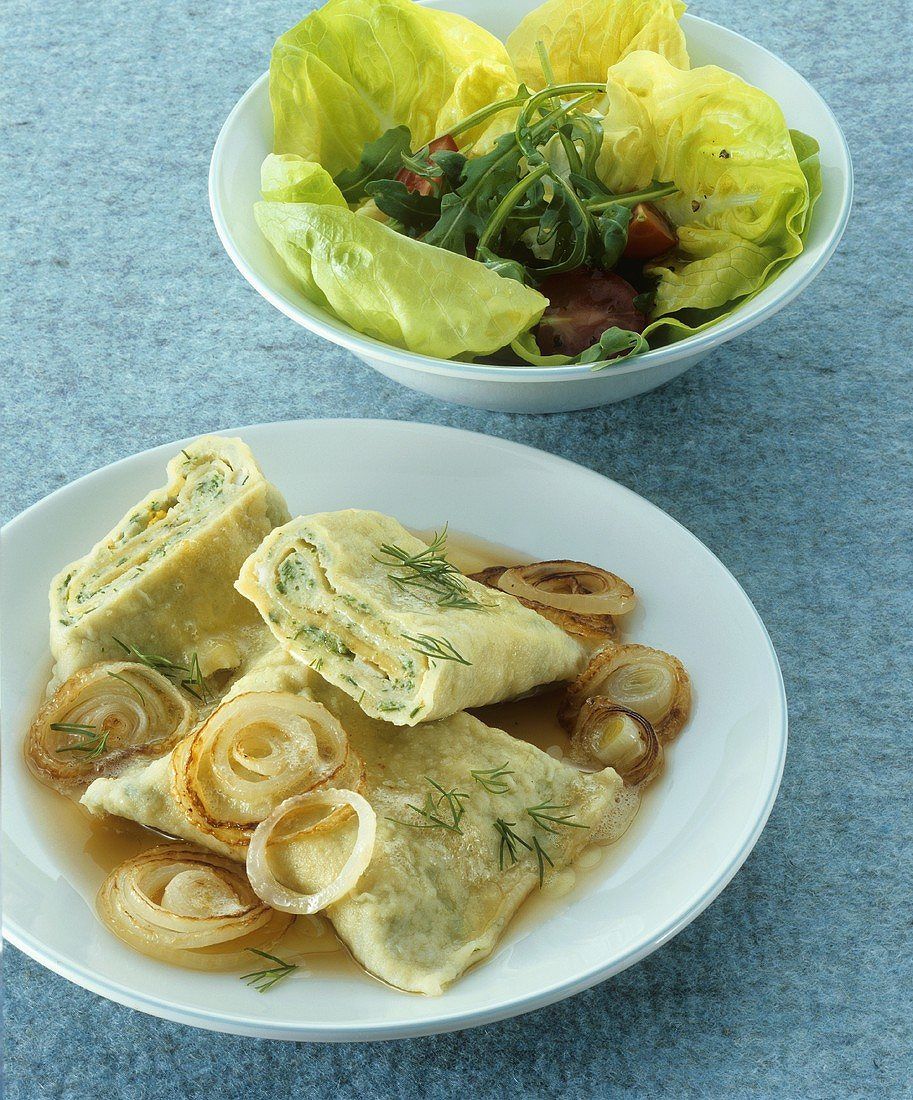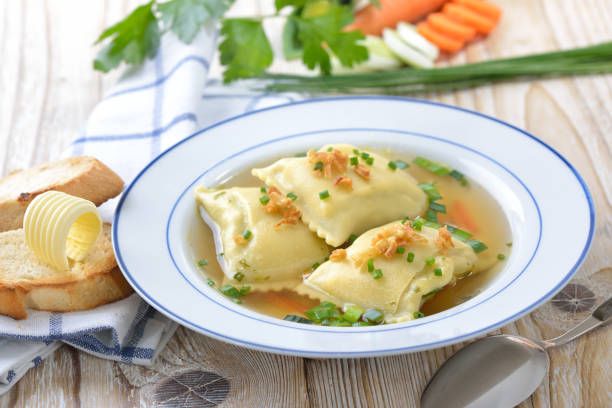Home /
- Blog /
- Swabian ravioli: Maultaschen. What they are and the story behind their origin plus: tasty preperations
Swabian ravioli: Maultaschen. What they are and the story behind their origin plus: tasty preperations

One of the German foods with probably the most curious origin story or rather origin legend are the Maultaschen - the Swabian ravioli, which are actually not ravioli.
A legend...
It is not one hundred percent clear who and why this food was invented, but there is a legend around it:
In the 18th century, it was the custom for monks in a monastery to fast. But allegedly there were brothers in a monastery somewhere in the southern part of Germany - today's Swabia - who behaved a little more sophistically than they should have. While they were supposedly fasting, they craved meat. To hide this weakness from God, they mixed spices and spinach together with the meat and covered it with freshly made pasta - similar to ravioli. Because the monastery was located in Maulbronn, they are called Maultasche - which means mouth bag.
Thus, even today, Maultaschen are usually pockets of pasta dough with a basic filling of sausage meat, onions and green spices. You can also add some spinach. There is also a vegetarian Maultasche, which consists of cheese and spinach.
Another indication for this theory is that the typical dish on Maundy Thursday in Swabia is still Maultaschen in broth. This already seems very suspicious.
Thus, even today, Maultaschen are usually pockets of pasta dough with a basic filling of sausage meat, onions and green spices. You can also add some spinach. There is also a vegetarian Maultasche, which consists of cheese and spinach.
Another indication for this theory is that the typical dish on Maundy Thursday in Swabia is still Maultaschen in broth. This already seems very suspicious.

However, one must also admit that the similarities to the Italian ravioli or also tortellini, as well as the spinach-containing filling could indicate that they were simply imported - at least from the idea. In terms of time, this also fits quite well.
So, the question arises whether one prefers to believe in the saucy monks or in the import together with potatoes and tobacco. But one thing is certain: Even if it should be imported, the Maultasche from its content has oriented itself very much to the monk story.
Let it taste
In the meaty version, the ingredients for the filling are first mixed together and processed so that a smooth mass is created. This is then applied to the pasta dough and covered with another pasta dough. The edges and corners are pressed together - you use a little egg white with water here, so that the ends hold better and do not burst open during cooking. Finished is the Maultaschen.

In addition to the classic variant of cooking the Maultaschen in a vegetable broth and then draining it, you can also serve them chopped or even in one piece in the broth.
Roasted Maultaschen are also a real hit. To do this, slice the Maultaschen and fry them together with onions - and egg, depending on your cravings - until they are slightly crispy but still soft. The caramelized onions round out the mixture perfectly.
The classic version is somewhat similar to the fried version. Here the Maultaschen are cooked as already mentioned and the water is drained off. The Maultaschen, now cooked like ravioli, are then served in one piece with caramelized onions and salad. Here you can vary between the green and a potato salad.
Extravagantly, of course, they can be served with tomato or mushroom sauce or even baked. To each his own!